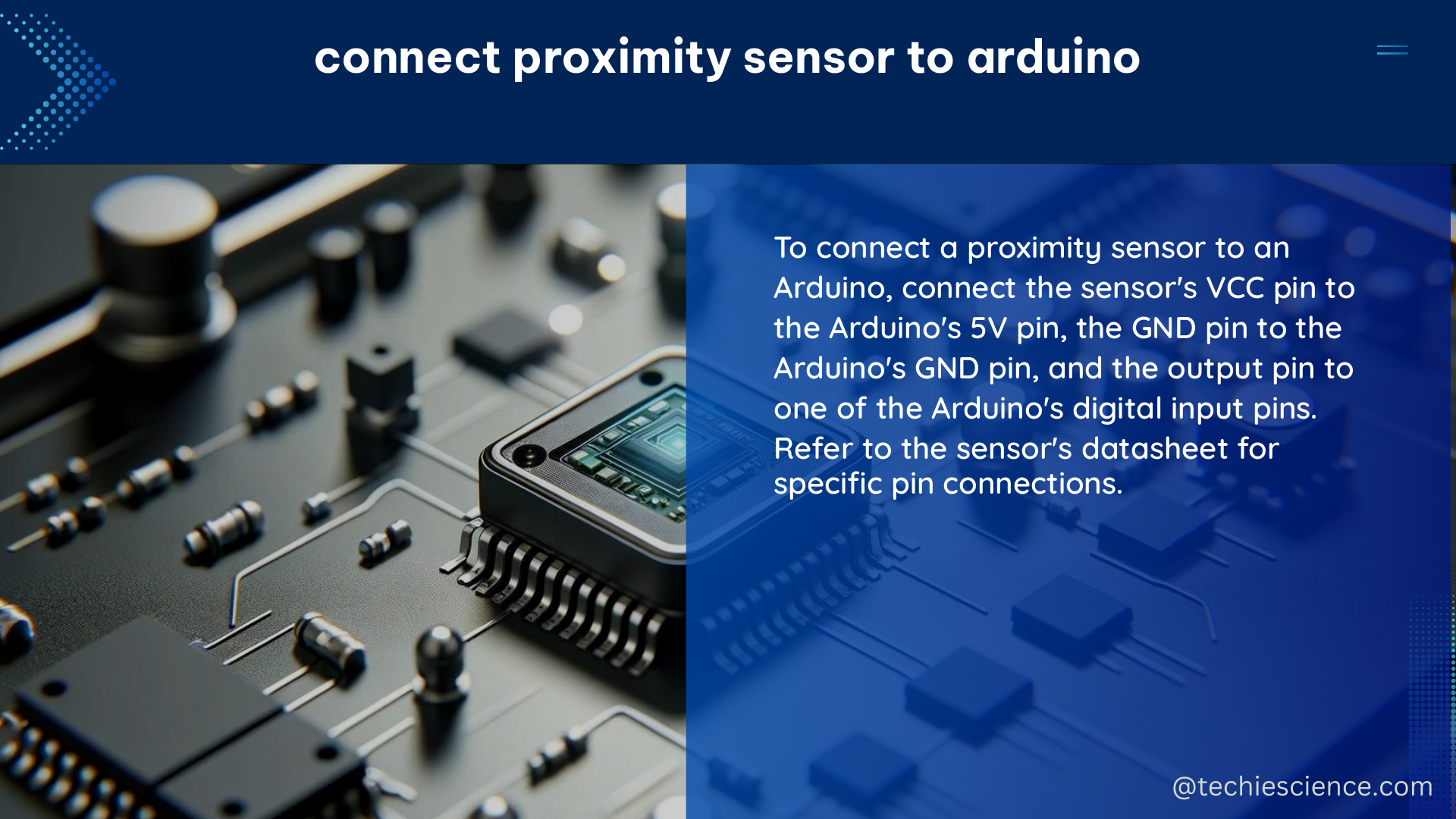Connecting a proximity sensor to an Arduino is a common task in various electronic projects, from home automation to robotics. This comprehensive guide will walk you through the process of interfacing a PNP proximity sensor with an Arduino, providing detailed technical specifications, step-by-step instructions, and a sample code to get you started.
Understanding Proximity Sensors
Proximity sensors are devices that can detect the presence or absence of an object without physical contact. They come in various types, including inductive, capacitive, ultrasonic, magnetic, and optical sensors. Each type has its own unique characteristics and requirements for interfacing with an Arduino.
In this guide, we will focus on connecting a PNP (Positive-Negative-Positive) proximity sensor, which is a common type of sensor used in many applications.
Voltage Divider for PNP Proximity Sensor

A PNP proximity sensor requires a voltage divider circuit to safely connect it to the Arduino. The voltage divider reduces the sensor’s output voltage to a level that the Arduino can read as a digital input.
To build the voltage divider, you will need two resistors. The values of these resistors will depend on the output voltage of the PNP sensor and the desired input voltage for the Arduino.
For example, if the PNP sensor has a 12V output and you want to reduce it to 3.3V (the typical input voltage for an Arduino), you can use a 10kΩ resistor and a 20kΩ resistor in a voltage divider configuration.
The formula to calculate the resistor values is:
R1 = (Vout / Vin) * R2
Where:
– R1 is the first resistor (connected to the sensor output)
– R2 is the second resistor (connected to ground)
– Vout is the desired output voltage (e.g., 3.3V)
– Vin is the input voltage (e.g., 12V)
In this case, the resistor values would be:
R1 = (3.3V / 12V) * 20kΩ = 5.5kΩR2 = 20kΩ
You can use the nearest standard resistor values, such as 10kΩ for R1 and 20kΩ for R2.
Connecting the PNP Proximity Sensor to Arduino
Once you have built the voltage divider, you can connect the PNP proximity sensor to the Arduino as follows:
- Connect the brown wire of the PNP sensor to the positive voltage source (e.g., 12V).
- Connect the blue wire of the PNP sensor to the negative voltage source (ground).
- Connect the black wire of the PNP sensor to the voltage divider (the junction of
R1andR2). - Connect the junction of
R1andR2(the voltage divider output) to a digital input pin on the Arduino (e.g., pin 2). - Connect a 10kΩ resistor between the digital input pin and ground to pull the pin low when the sensor is not detecting an object.
Here’s a table summarizing the connections:
| PNP Sensor Wire | Connection |
|---|---|
| Brown | Positive voltage source (e.g., 12V) |
| Blue | Negative voltage source (ground) |
| Black | Voltage divider (junction of R1 and R2) |
| Arduino Connection | Component |
|---|---|
| Digital input pin (e.g., pin 2) | Voltage divider output |
| Ground | 10kΩ resistor |
Sample Arduino Code
Here’s an example Arduino code that reads the state of the PNP proximity sensor connected to pin 2:
const int pin = 2;
void setup() {
pinMode(pin, INPUT);
Serial.begin(9600);
}
void loop() {
int sensorValue = digitalRead(pin);
if (sensorValue == LOW) {
Serial.println("No object detected");
} else {
Serial.println("Object detected");
}
delay(500);
}
This code reads the digital value of the input pin (pin 2) and prints a message to the serial monitor indicating whether an object is detected or not. You can modify this code to suit your specific needs, such as triggering an action or controlling a device based on the sensor’s output.
Troubleshooting Tips
If you encounter any issues while connecting the proximity sensor to the Arduino, here are some troubleshooting tips:
- Verify the sensor type: Ensure that you are using a PNP proximity sensor and not a different type, as the connection process may vary.
- Check the voltage divider: Ensure that the resistor values in the voltage divider are correct and that the output voltage is within the Arduino’s input range (typically 0-5V or 0-3.3V).
- Inspect the wiring: Double-check all the connections between the sensor, voltage divider, and Arduino to ensure they are correct and secure.
- Monitor the sensor output: Use a multimeter or an oscilloscope to measure the voltage at the voltage divider output and the digital input pin on the Arduino to verify the sensor’s behavior.
- Update the Arduino code: Ensure that the Arduino code is correctly reading the sensor’s output and interpreting the data as expected.
Conclusion
Connecting a proximity sensor to an Arduino is a straightforward process that involves building a voltage divider circuit and wiring the sensor to the Arduino’s digital input pin. By following the detailed instructions and technical specifications provided in this guide, you should be able to successfully interface a PNP proximity sensor with your Arduino-based project.
Remember to always refer to the sensor’s datasheet and the Arduino’s documentation for the most up-to-date information and best practices. Happy tinkering!
References
- Interfacing Proximity Sensors with Arduino
- Arduino Proximity Sensor Tutorial
- Data Tabulation & Recording of Proximity Sensor using Arduino
- Proximity Sensor Interfacing with Arduino

The lambdageeks.com Core SME Team is a group of experienced subject matter experts from diverse scientific and technical fields including Physics, Chemistry, Technology,Electronics & Electrical Engineering, Automotive, Mechanical Engineering. Our team collaborates to create high-quality, well-researched articles on a wide range of science and technology topics for the lambdageeks.com website.
All Our Senior SME are having more than 7 Years of experience in the respective fields . They are either Working Industry Professionals or assocaited With different Universities. Refer Our Authors Page to get to know About our Core SMEs.